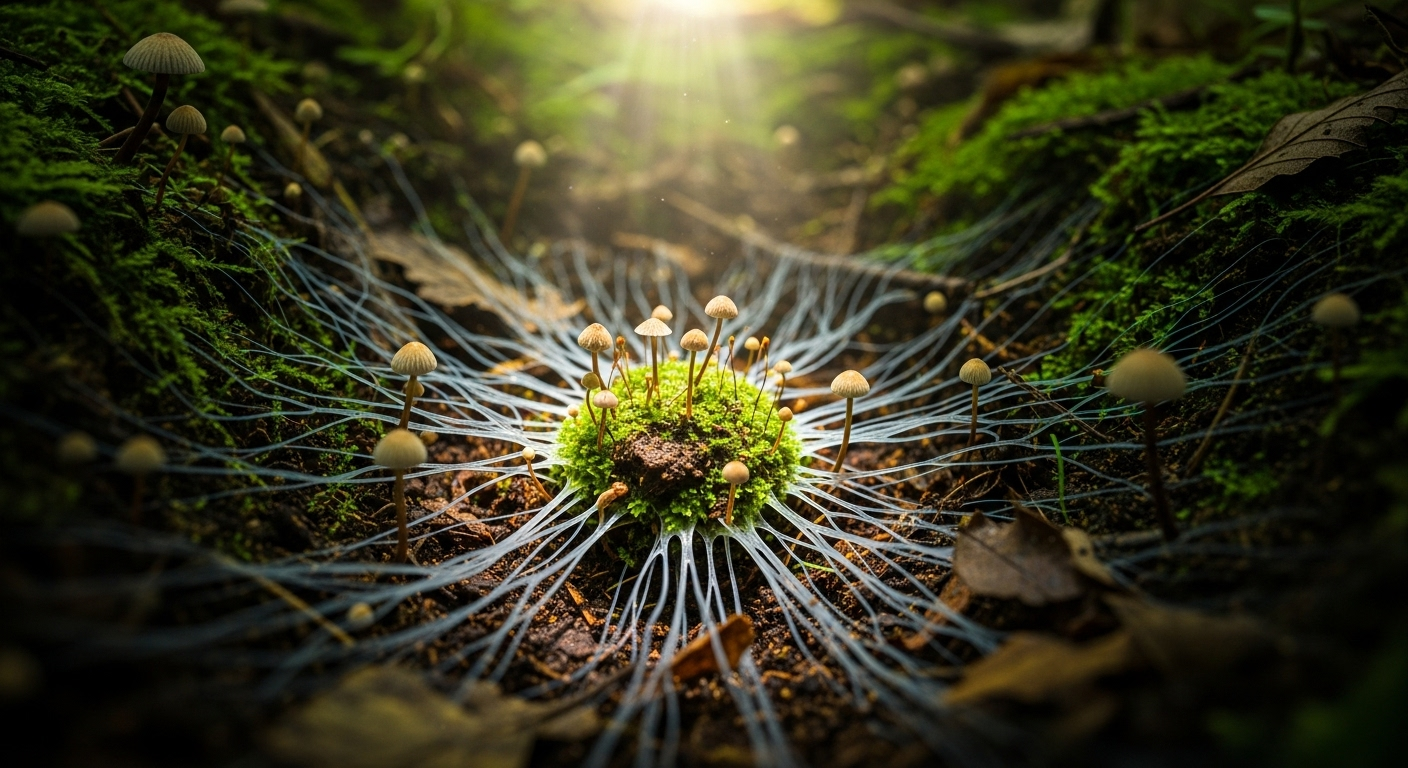Mycelial Networks: Nature's Hidden Health Allies
Can a fungus hold the key to revolutionizing our approach to health and wellness? Beneath our feet lies an intricate web of mycelia, the thread-like structures of fungi that form vast underground networks. These remarkable systems, often called nature's internet, are now captivating researchers for their potential to transform our understanding of holistic health and ecological balance.

The concept of mycelial networks gained prominence through the work of pioneering mycologist Paul Stamets, who likened these fungal systems to the internet. Just as the internet facilitates information exchange, mycelial networks enable the transfer of nutrients, water, and chemical signals between plants and trees. This interconnectedness suggests a level of cooperation and mutual support in nature that we’re only beginning to comprehend.
Mycelial Networks and Human Health
The potential impact of mycelial networks on human health is a burgeoning area of research. Scientists are exploring how the principles of these natural systems might be applied to improve our own well-being. One fascinating aspect is the way mycelial networks demonstrate the importance of interconnectedness and balance in maintaining health.
Researchers are investigating how the compounds produced by various fungi in these networks might have medicinal properties. Some mushrooms, for instance, have shown promise in boosting immune function and potentially fighting certain types of cancer. The study of mycelial networks is also inspiring new approaches to understanding the human microbiome and its role in overall health.
Biomimicry in Health: Learning from Nature’s Design
The concept of biomimicry – emulating nature’s time-tested patterns and strategies – is gaining traction in the health and wellness field. Mycelial networks offer a compelling model for how interconnected systems can support overall health and resilience. This has led to innovative approaches in fields ranging from nutrition to environmental health.
For example, some nutritionists are exploring diets that mimic the diverse and interconnected nature of mycelial networks, emphasizing a wide variety of plant-based foods to support a healthy gut microbiome. In environmental health, the study of how mycelial networks detoxify soil is inspiring new methods for natural remediation of polluted areas.
The Ecological Connection to Wellness
Understanding mycelial networks highlights the intrinsic connection between ecological health and human wellness. These fungal systems play a crucial role in maintaining forest health, which in turn affects air quality, climate regulation, and biodiversity – all factors that impact human health.
This realization is fostering a more holistic approach to health that considers the well-being of individuals as inseparable from the health of their environment. It’s a perspective that aligns with traditional wisdom from many indigenous cultures, which have long recognized the interconnectedness of all living things.
Emerging Therapies and Practices
The study of mycelial networks is inspiring new therapeutic approaches and wellness practices. Some practitioners are developing meditation and mindfulness techniques that encourage individuals to visualize themselves as part of a larger, interconnected system, similar to a mycelial network. This approach aims to foster a sense of connection and mutual support, potentially improving mental health and social well-being.
In the realm of physical therapy, the resilience and adaptability of mycelial networks are inspiring new rehabilitation techniques. These methods focus on strengthening the body’s interconnected systems rather than isolating specific areas, mirroring the holistic nature of fungal networks.
Fascinating Facts About Mycelial Networks and Health
-
A single teaspoon of healthy soil can contain several miles of fungal mycelium
-
Some trees can share nutrients with neighboring trees through mycelial networks, even across different species
-
Certain fungi in mycelial networks can break down pollutants and heavy metals, potentially aiding in environmental cleanup
-
Research suggests that some mushrooms connected to mycelial networks may have properties that support cognitive health
-
The largest known organism on Earth is a honey fungus in Oregon, with its mycelial network spanning an area of about 2,385 acres
As we continue to unravel the mysteries of mycelial networks, we gain invaluable insights into the interconnected nature of health and ecology. These fungal superhighways beneath our feet offer a profound lesson in the power of cooperation, resilience, and holistic balance. By embracing the wisdom of these natural systems, we open new pathways to enhancing our well-being and fostering a healthier relationship with the world around us. The future of health and wellness may well be rooted in the intricate web of life that thrives just below the surface.





